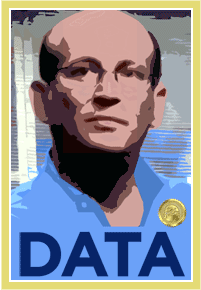
Took a call from Janet Babin of NPR’s Marketplace to speculate on the upcoming Kindle announcement and to talk about how the Kindle fits into publishing and reading. Will air, if it does, on Monday.
But like many opportunities to opine, the data came in after the recording. Yikes! Almost as soon as I got off the phone with Janet, the ever alert Woody Hartzog sent me a breaking story.
I had said to Woody, in preparing to talk with Janet, that the upcoming battle isn’t so much between e-book readers — Kindle is the only one that seems at the moment to have momentum — but between the Kindle and smart phones. Google had just 24 hours earlier announced that the books from their Book Search would become available on a variety of smartphones — only iPhone and the T-Mobile G1 immediately though. This was a move that in part was meant to chill the Kindle announcement a bit, but also to show some movement in the phone reader area. Up til Thursday, Mobipocket which is owned by Amazon was the major “ebook on phone” application.
So far I had a take on that: real reading as I have seen being done on the Kindle wasn’t happening on smartphones because of the form factor. Too small on the phone for the kind of scanning browsing reading that recreational readers practice whilst in transit. Kindles have been most successful among folks who are reading on the airplane, waiting for the airplane, stuck in a hotel room or lobby, or on vacation. In short transit reading, reading books that would probably not be kept in a personal library for all that long. Add reading in bed to the mix plus vacation reading — both of which I would call transit reading — and the Kindle is a great choice. Plenty of books in a one book form factor, you never lose your place, the lighting is convenient and not obtrusive, more books are available with only a short wait. Not free exactly. Libraries provide that service. Not building your personal or business library — but that may be something reserved for boomers and beyond any way.
Bottom line. Kindle has a niche that phones won’t quite fill. But look for a battle there.
Sure enough. The article that Woody sent shows Amazon firing back at Google. Amazon announced that there would be Kindle reader for smart phones. Not time line and no specific phones and no direct reference to Mobipocket either. I assume this is mostly a press release battle leading up to the Monday announcement at the Morgan Library by Amazon.
Yesterday, I ran in to an editor for a University Press. He has a Kindle and he loves it! But his press, while they offer Kindle versions of their books sell only a few. Whew! As this supports my claim that Kindle is for transit reading nd recreational reading.
But here is how he uses his Kindle: He reads manuscripts on it. Book manuscripts for academic books run easily to and over 350 pages. 8 or 10 of those and you are talking serious bulk and weight. But the Kindle is happy to hold those and more whilst keeping his place and keeping all the pages together! A limited marketplace to be sure, but a very appropriate and smart way to use the device. Too bad I learned of this too late — but in a brief radio story it wouldn’t and shouldn’t have been included. (still a good story for here).
I’m afraid I wasted a lot of time talking about how the Thor Tool decision changed publishing by creating tax pressure on inventories (while not taxing those inventories directly) [yes it is complicated], leading to the pulping rather than the storing of slow selling books. Authors and publishers hate the decision that took books from storage. Instant publishing and publishing on demand have held out hope for slow sellers but until the promise of direct digital sells there was really no respite for writers who wrote other than blockbusters or quick sales titles. I care, but that’s too much for the Marketplace marketplace to take in it seems.
Speaking of marketplaces. We didn’t talk that much about price. $360 for a device to read? Yikes! There are netbooks below that price for sell on Amazon now.
Fearless and unfounded prediction for Monday’s announcement: Kindle will have video viewing capability and a partnership with Hulu (if not others). Anything less will be anti-climatic.
UPDATE: The radio show and the Kindle announcement are now out. My discussion with Woody above is closer to what got air on Marketplace than my fearless and unfounded and completely wrong prediction on this blog. On air, I said:
The question that you have to ask is, how much reading do you want to do on your phone, or do you need a separate device to do that reading. That’s really about to be answered in the marketplace.
Always good to mention the product or show name in your quote ;->
The Kindle announcement was anti-climatic. Nice to have a slimmer, longer lasting device with a simpler interface, but the price is still the same — in the netbook range. And except for text to speech, which I have to hear to evaluate, there isn’t much additional innovation presented. Still black and white.










 When I met Steve Snow, he was not only embarking on a life-changing journey, he was embarking on a journey in which he changed others lives as well.
When I met Steve Snow, he was not only embarking on a life-changing journey, he was embarking on a journey in which he changed others lives as well. 




Recent Comments